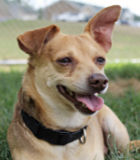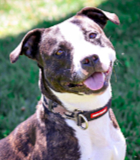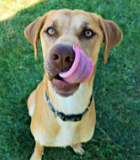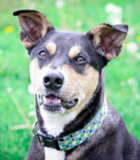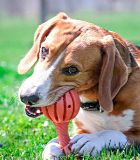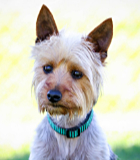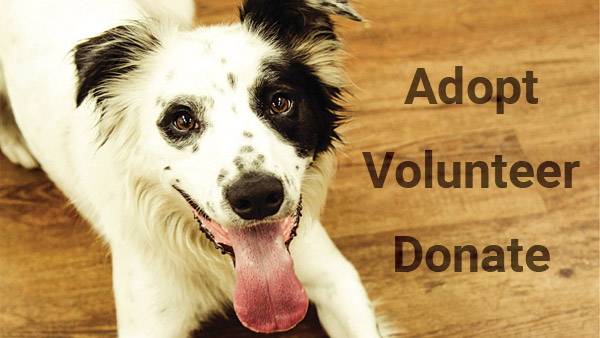Pit Bull Information
- This topic has 0 replies, 1 voice, and was last updated 15 years, 2 months ago by
Mackenzie’s Admin.
-
AuthorPosts
-
February 26, 2009 at 11:10 pm #366
Mackenzie’s Admin
MemberWritten by the ASPCA
What is a Pit Bull?
There is a great deal of confusion and fear associated with the term “pit bull.” This is a label commonly used for a type of short-coated large terrier, anywhere from 40-80 pounds, characterized by a wide skull, powerful jaws, and a muscular, stocky body. Some of the dogs so labeled are purebred—either the American Staffordshire Terrier or the American Pit Bull Terrier. Some of the dogs labeled “pit bulls” are mixed with other breeds.What is NOT a Pit Bull?
The Staffordshire Bull Terrier and the Bull Terrier are sometimes mistaken for pit bulls. Although they share a similar body type, they are substantially smaller dogs. American Bulldogs are also sometimes confused as pit bulls, but they, too, belong to a distinct breed.The Pit Bull Heritage
The pit bull’s ancestors hail from England and were brought to North America by English immigrants. These descendants were bred from bulldogs, who were selectively bred to participate in an inhumane blood sport called baiting. In this “sport,” a dog was trained to attack a bull, bear or other large animal around the face and head, and had to hang on without releasing his grip until the animal became exhausted from fighting and from loss of blood. When animal baiting was banned in the early 1800s, people began to make their dogs fight against each other instead. As this sport gained popularity, enthusiasts developed a lighter, more athletic dog by breeding bulldogs with black and tan terriers. Known as “bull and terriers,” these dogs made their way to North America to become the forefathers of today’s pit bulls.A Bit About What Makes a Breed
Every breed of dog was developed to perform a specific job—whether that is hunting rabbits, retrieving downed birds, herding livestock or sitting on people’s laps. When breeders develop a breed, they select only those dogs who perform the job best to reproduce the next generation. The dog should be built to perform the desired job and possess the behavioral tendencies to learn the job. But it’s important to understand that even though a breed may be characterized by a certain pattern of behaviors, individuals within a breed can vary tremendously. Some dogs will be courageous, others timid; some dogs will be stubborn, others easy-going; some dogs will be sociable, others aloof. So don’t be alarmed if your dog doesn’t fit exactly with his or her breed description.Breed Characteristics of Pit Bulls
Pit bulls were genetically selected for their fighting prowess. What does this mean? What it doesn’t mean is that pit bulls can’t be around other dogs or that they are unpredictably aggressive, or that they will fight to the death. What it does mean is that pit bulls can easily be encouraged to be aggressive toward other dogs or, to put it another way, it takes less to arouse a pit bull than many other breeds to be aggressive toward other dogs.It may help to understand how dogs learn to get along with other. Puppies of all breeds need to be socialized with other dogs in order to learn how to interact, how to play, and how to communicate with them. This early socialization acts to “inoculate” the puppy against future unpleasant experiences. Suppose the puppy is playing with another dog and the play escalates into a fight. Most well socialized puppies will bounce back after a fight and still want to play. Pit bull puppies need more than the average amount of socializing with other dogs–to ensure that they enjoy the company of dogs and to modify their natural play behavior, which is often rougher than that of other breeds. Even with extra socialization, a little squabble between friends could spark a pit bull to be testy with dogs—simply because the pit bull is genetically predisposed to react aggressively to dogs.
Dogfights between dogs of “average” breeds are usually “ritualized.” The objective is for one dog to walk away the victor with little or no bloodshed. The participants engage in plenty of preliminary behavior designed to intimidate their opponent, such as facial expressions, posturing, circling, growling, and snarling. Bites delivered during a fight are typically inhibited–the point is to cause pain, but not necessarily to inflict serious injuries. Pit bulls, however, have been selected to behave quite differently during fights. They rarely give any warning that they are about to act aggressively (some people call them “stone-faced”), and they seldom back down against an opponent. They are more often involved in fights that end in injury, suggesting that a pit bull’s aggression more closely resembles predatory behavior.
Even though pit bulls were bred to fight with each other, breeders took pride in producing dogs who were trustworthy and friendly to people. Handlers had to be in the pits with the dogs during fights, sometimes having to pull them apart to end a fight. Any dog who redirected their aggression to a person was culled. These “early” pit bulls typically lived in their owner’s homes and actually earned the nickname of “nursemaid’s dog” because they were so reliable with young children.
Like most terriers, pit bulls are extremely tenacious and stubborn. They easily become highly aroused and, when in such an agitated state, often have little control over their behavior if they have not been taught to inhibit their impulses. Hence, pit bulls have a reputation for being more “mouthy” and bite harder in play than other breeds. They are also relatively impervious to pain.
The Pit Bull’s Bad Reputation
Sadly, pit bulls have acquired a reputation as unpredictable, dangerous, and vicious. Their intimidating appearance has made them attractive to the wrong sorts of owner—people who are looking for a macho dog and end up encouraging aggressive behavior. In order to meet the growing demand for pit bulls, unscrupulous and uncaring breeders are producing puppies without maintaining the breed’s typical reliability with people. In fact, pit bulls are now notorious for redirecting aggression from a dog to any person who attempts to break up a fight. It is a shame what has happened to this loyal and affectionate breed.Having said all that, we must tell you that a well-bred, well-socialized, and well-trained pit bull is one of the most delightful, intelligent, and gentle dogs imaginable. Some of the most famous dogs in American history were pit bulls: Stubby, the most decorated United States war dog; Petey, the beloved mascot from Little Rascals, and Helen Keller’s faithful companion. Additionally, many pit bulls were featured in well-known advertising campaigns, such as Buster Brown shoes and Levis. The majority of pit bulls are still ambassadors for their breed, serving as loving companions, family members, and therapy dogs, working in search and rescue, narcotics and explosives detection, and police and sentry duty. Unfortunately, we often hear more about the exceptions than the rule.
What Pit Bulls Need
If you have, or are thinking of adopting, a pit bull, please ensure that you can provide the following:
– Plenty of early socialization with dogs and with people, beginning as young as seven weeks of age and continuing into adulthood.
– Training, starting with Puppy Kindergarten and progressing through Basic and Advanced Obedience. We highly recommend continued guidance throughout the dog’s life.
– Neutering or spaying–there are already too many pit bulls and not enough homes for them.
– Lots of daily exercise! Pit bulls are high-energy athletes!
– Honest and constant attention to the behavior of the dog. Questionable behavior can never be excused, and must be addressed immediately through training/retraining, and/or managementRecommended Reading:
The Working Pit Bull by Diane Jessup (TFH Publisher)
The Ultimate American Pit Bull Terrier by Jacqueline O’Neil (IDG Books Worldwide) -
AuthorPosts
- You must be logged in to reply to this topic.



